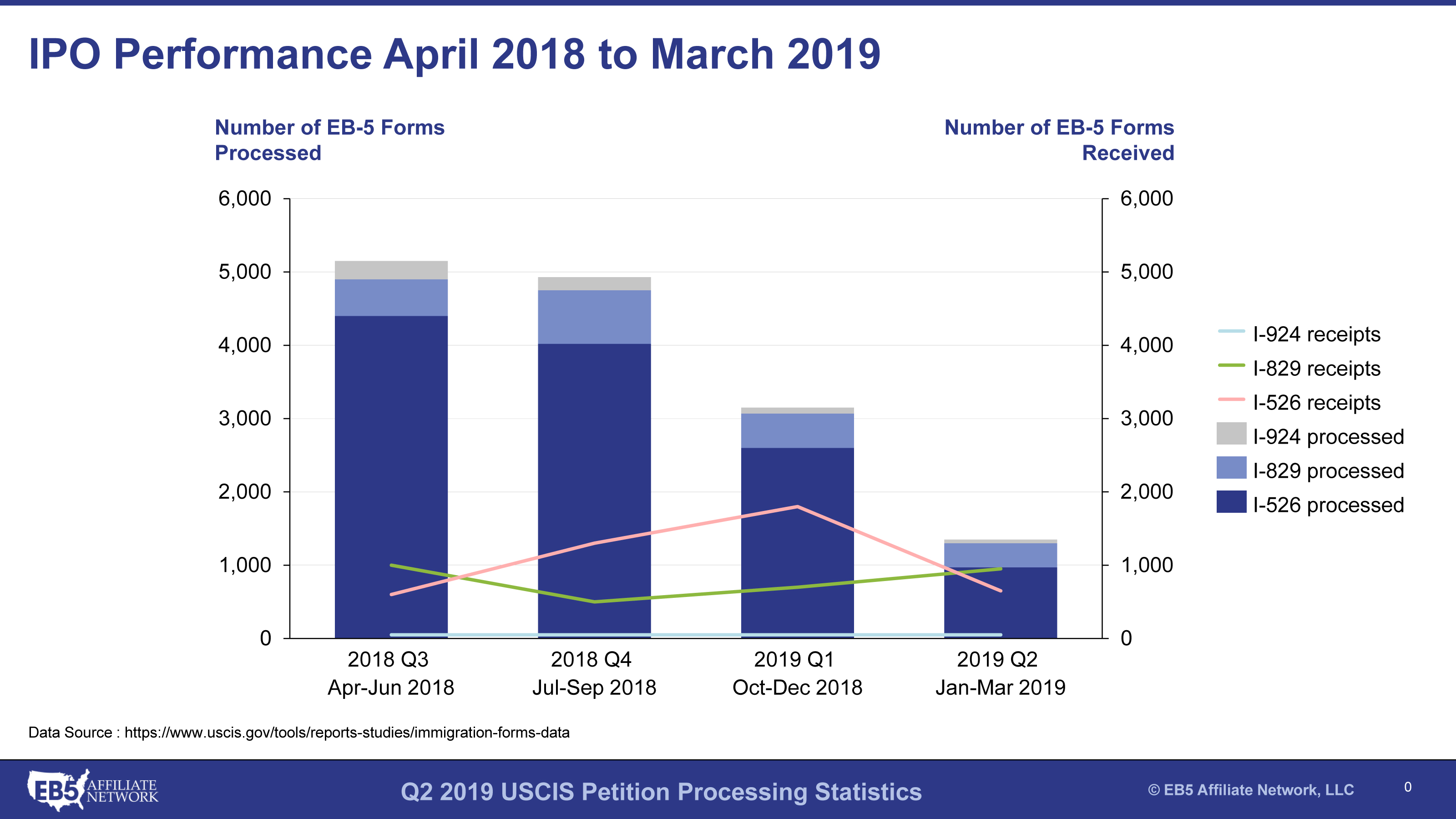United States Citizenship and Immigration Services (USCIS) has released the data on the number of EB-5 petitions processed in the second quarter of FY2019, which ran from January to March 2019. The updated statistics are available on the organization’s Immigration and Citizenship Data page.
The decline in the number of petitions the Immigrant Investor Program Office (IPO) processed during FY2019 Q1 has continued. After a 37% decrease in processing volume in Q1, this volume further decreased by around 60% in Q2, with the overall number of petitions processed falling to only 1,290.
In FY2019 Q2, the IPO processed 975 I-526 petitions, compared to 2,573 in FY2019 Q1 and 4,497 in FY2018 Q2. Additionally, significantly fewer I-526 petitions were submitted, with only 580 submitted during FY2019 Q2, down from 1,808 in FY2019 Q1.
The number of I-829 applications processed fell from 474 in Q1 to 285 in Q2, with the number of petitions submitted increasing slightly from 797 to 921. Processing data for I-924 applications has been withheld, but 22 applications were submitted, and 156 applications remain pending.
Of the 975 I-526 petitions processed, 180 petitions were denied and 795 were approved. Thus, the percentage of I-526 petitions approved decreased slightly, from around 85% in FY2019 Q1 to 81.5% in FY2019 Q2. Additionally, I-829 application approvals increased slightly from approximately 93.5% to 94.7%.
A total of 22,082 EB-5 petitions remain unprocessed: 13,105 I-526 applications, 8,821 I-829 applications, and 156 I-924 applications. While processing times for I-526 applications dropped slightly at the end of January 2019—to 20.4 months compared to 22.1 months in FY2018—as of July 2019, they have increased to 25.5 to 45 months. Similarly, processing times for I-829 petitions, which increased from 27.1 months to 30.9 months for the same period, have increased to 28 to 43.5 months.
The exact cause of the reduction in output is unclear, as USCIS has not offered any explanation for the slowdown. However, possible causes include shortages of staff or other resources at IPO, a decision to pause or reduce processing, and closer, more time-consuming scrutiny of petitions.
When processing volumes decrease, processing times increase. Consequently, it takes longer to clear backlogs, and new EB-5 program petitioners face longer processing times. Based on the current IPO output and backlog, any new petitions filed would take almost eight years to process. This will change if IPO output changes.
Although increased I-526 processing times are not ideal for those pursuing U.S. permanent resident status through the EB-5 program, it does have the benefit of providing some protection against children aging out due to delays, specifically for applicants facing visa retrogression and long wait times for visas to become available.
Essentially, if I-526 processing takes longer than the visa wait time, children should be protected against aging out. Under the Child Status Protection Act, a qualifying child’s age is frozen on I-526 submission, with the clock restarting on I-526 approval. Therefore, delayed I-526 approval potentially freezes the child’s age until a time closer to visas becoming available. If a delay occurs after I-526 approval and there is a significant waiting time for visas, the risk of aging out increases.











